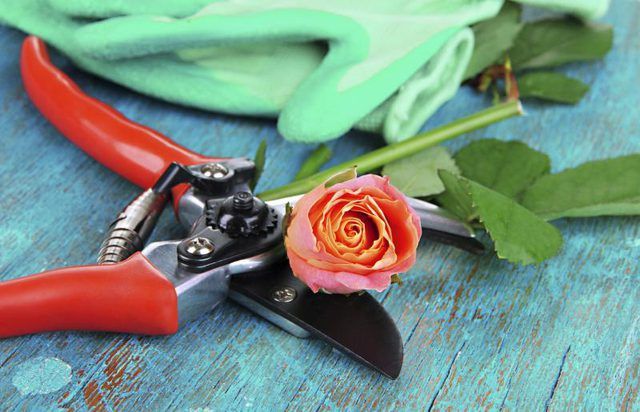Bulbs
Flower Basics
Flower Beds & Specialty Gardens
Flower Garden
Garden Furniture
Garden Gnomes
Garden Seeds
Garden Sheds
Garden Statues
Garden Tools & Supplies
Gardening Basics
Green & Organic
Groundcovers & Vines
Growing Annuals
Growing Basil
Growing Beans
Growing Berries
Growing Blueberries
Growing Cactus
Growing Corn
Growing Cotton
Growing Edibles
Growing Flowers
Growing Garlic
Growing Grapes
Growing Grass
Growing Herbs
Growing Jasmine
Growing Mint
Growing Mushrooms
Orchids
Growing Peanuts
Growing Perennials
Growing Plants
Growing Rosemary
Growing Roses
Growing Strawberries
Growing Sunflowers
Growing Thyme
Growing Tomatoes
Growing Tulips
Growing Vegetables
Herb Basics
Herb Garden
Indoor Growing
Landscaping Basics
Landscaping Patios
Landscaping Plants
Landscaping Shrubs
Landscaping Trees
Landscaping Walks & Pathways
Lawn Basics
Lawn Maintenance
Lawn Mowers
Lawn Ornaments
Lawn Planting
Lawn Tools
Outdoor Growing
Overall Landscape Planning
Pests, Weeds & Problems
Plant Basics
Rock Garden
Rose Garden
Shrubs
Soil
Specialty Gardens
Trees
Vegetable Garden
Yard Maintenance
How to Prune Roses After Bloom
How to Prune Roses After Bloom. Rose bushes *(Rosa spp.)* must be pruned at least once or twice each year. Heavy pruning is done in winter or, in some climates, early spring. Roses are hardy in U.S. Department of Agriculture plant hardiness zones 2 through 11, depending on the species. Prune the roses again in summer or fall right after they bloom...

Rose bushes (Rosa spp.) must be pruned at least once or twice each year. Heavy pruning is done in winter or, in some climates, early spring. Roses are hardy in U.S. Department of Agriculture plant hardiness zones 2 through 11, depending on the species. Prune the roses again in summer or fall right after they bloom to tidy them up and encourage new cane growth. Roses that produce flowers in spring and again in fall bloom more profusely in fall when pruned right after their spring bloom cycle.
The Right Pruning Tool
Use sharp, scissor-type hand pruners to prune roses. Pour household disinfectant over the open hand pruner blades, and let it sit on them for a few minutes to sterilize them, preventing the spread of plant diseases. Rinse off the disinfectant with clear water, and dry the blades with a clean towel. Disinfectant can harm rose stem tissue.
Basics for All Roses
Deadhead, or remove, all remaining faded blooms. Do so by cutting each faded flower's stem ? inch above the first set of five leaflets. A flower stem cut higher than that point produces weak new stem growth that either will not have flowers or will have flowers that are smaller than normal.
Prune off all dead, diseased or crossing stems whenever you notice them throughout the growing season. Make each of those cuts at the base of a stem.
Make each pruning cut on a healthy rose cane or stem ? inch above a growth bud, which is usually where there are five leaflets. Also make each cut at a 45-degree angle parallel to the growth bud. Buds facing outward produce stems that grow away from the bush's center. Buds facing inward produce stems that grow toward the bush's center. Do not make a cut at too sharp of an angle or too close to the growth bud. A bud damaged by pruning does not grow a new stem.
Insect and Disease Protections
Seal the cut ends of stems that are wider than a pencil by using white household glue to keep out boring insects. Throw dead flowers and stem trimmings in the trash. Leaving them in the garden provides a growing environment for fungal and bacterial diseases that can infect rose bushes.
Shrub and Old Garden Roses
Shrub roses and antique or old garden roses should be trimmed to about two-thirds their heights when they finish blooming. This method is especially important for roses that bloom only once annually, in spring or summer. They bloom on "old wood," or stems that grew the previous year. Pruning them later in the growing season results in less stem growth and reduced blooming the following year.
Climbing Roses
Climbing roses should not be pruned until they are 2 to 3 years old. The stems that produce flowers on climbing roses are called lateral stems. After a climber finishes blooming, use hand pruners to cut each lateral stem ? inch above the second or third growth bud. Ever-blooming climbers need to have their old, woody canes completely removed. Those canes are 2 to 3 years old and brown or tan at their bases. Adjust the position of the remaining canes so they are spread evenly across the bushes' support structure. Once-blooming climbers and ramblers need to have their dead, weak or unproductive canes cut back to healthy, white tissue.
All Other Types of Roses
All other roses, including hybrid teas, should be trimmed only lightly after they bloom. Remove their spent blooms with disinfected hand pruners. Trim all their stems about only a few inches, just enough to give the bushes a neater appearance.